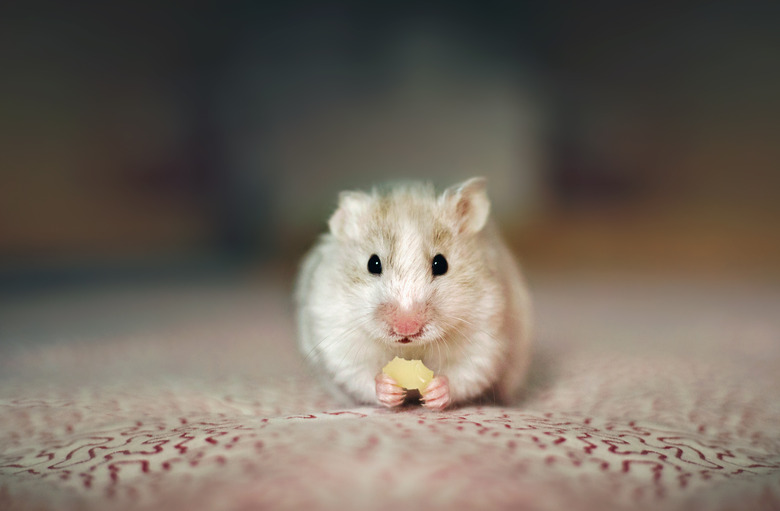How To Know The Age Of Your Hamsters
A hamster lives one human year on average for every 14 days of its life. Depending on his breed, a hamster can go from birth to old age in 1.5 to 3.5 years. Knowing your hamster's exact age isn't as important as knowing where he is in his life cycle, so you can provide the nutrition and care appropriate to each stage.
Determine your hamster's species
Determine your hamster's species
When you bought your hamster at the pet store, you likely know what type it is. If you didn't pay attention at the time, or forgot, do a simple Google search for hamster breeds. With only five species of hamster sold in the pet industry, it's pretty easy to determine which kind you have.
Knowing your hamster's type will give you clues to what behavior to expect, and any specific needs as well as how long you can expect it to live. It also helps you approximate the age of your hamster in months or weeks.
Expect a maximum lifespan of 1 to 3.5 years on average, according to The Hamster House. Some breeds will become elderly by the end of their first year of life, while others will be at the end of middle age at 18 months. Here are general lifespans for the five common types of hamsters available as pets, according to The Hamster House:
- Chinese hamster: 1.5 to 2 years
- Winter White Russian dwarf hamster: 1.5 to 2 years
- Campbell's dwarf hamster: 2 years
- Syrian hamster: 2 to 2.5 years
- Roborovski hamster: 3 to 3.5 years
Observe hamster hair
Observe hamster hair
Your hamster's fur — or lack thereof — is an important clue when your hamster is at either end of his life. Hamsters are born pink and hairless, and old hamsters generally experience dramatic thinning of their hair before they die.
Hamster pups spend the first week of their lives naked and blind. At around day 7, they start sprouting hair with what will be their adult coloration and are fully furred by week 3. A full-grown Syrian hamster — also known as a teddy bear hamster — is golden in color. However, hamsters come in various coat colors, including black, white, gray, and dark brown, according to PetSmart.
As hamsters enter old age as they pass a year, their coat will become less lustrous and begin thinning. If you got your hamster as an adult and are unsure of its age, don't assume that its hair loss is natural. Kidney inflammation, parasites, lymphoma, and hormone imbalances are just a few conditions that could cause your pet to develop bald spots or hairball according to Collingswood Veterinary Hospital and Urgent Care.
Monitor their behavior
Monitor their behavior
Hamsters that are 10 days old or younger don't do much besides wriggle and nurse. Between days 11 and 14, they start moving around on their own. Their eyes open and their ears become erect, allowing them to navigate their environment by more than just the senses of smell, taste, and touch.
As they start moving around, they'll begin eating soft foods on their own. By day 21, mom has usually weaned them, although, in the wild, they might continue for an extra couple of days.
By the fourth week, males can start reaching sexual maturity, according to The Hamster House. Females take a bit longer, exhibiting sexual behavior by week six. As Syrian hamsters age, they need to be in separate cages. The breed is aggressive and will fight with — and sometimes kill — other hamsters in its habitat.
Hamsters are at their playful best between puberty and one year of age. You'll hear them running their wheel and clattering around their environment in the wee hours of the night, which is the time they thrive. They'll sleep all day, and a hammy wakened abruptly from slumber often bites as a reflex.
As they pass the year mark, hamsters tend to slow down, much like humans, at the end of life. Health problems will show up at this age, and hamsters might start soiling their nest bedding as they get ready to pass away.
